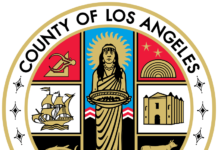Many a year ago, when Spanish galleons plied the seas, there was set forth from Baja California an expedition under the command of Gaspar de Portola to survey the wild western coast of North America for the Spanish crown. It was the first recorded expedition of its kind by Europeans in this neck of the woods and it was the same expedition, accompanied by Father Junipero Serra, that set in motion the establishment of California’s iconic missions.
Many a year ago, when Spanish galleons plied the seas, there was set forth from Baja California an expedition under the command of Gaspar de Portola to survey the wild western coast of North America for the Spanish crown. It was the first recorded expedition of its kind by Europeans in this neck of the woods and it was the same expedition, accompanied by Father Junipero Serra, that set in motion the establishment of California’s iconic missions.
The bulk of the expedition was carried out on land by the slow, sure-footed movement of Spanish troops. But it was common practice in those days to keep a number of cargo ships cruising up and down the coast to replenish the supplies of these expeditions.
Just such a ship was the galleon San Jose, a supply ship that was supposed to deliver its goods to Portola’s men in Monterey, but, alas, never showed up.
Now, a cultural anthropologist and historian with the Santa Cruz Island Foundation, thinks she knows what happened to the San Jose and it has everything to do with a cache of vintage Spanish artifacts discovered on Catalina Island in the late 1800s.
The artifacts, which include swords, coins, religious medals—even a human scalp, were found associated with Native American burial sites. Discovered in the late 1800s by an early archaeologist named Paul Schumacher, they had been stored in Harvard’s Peabody Museum of Archaeology and Ethnology until Daily set eyes upon them eight years ago.
(DNA on the scalp proved inconclusive because of contamination of the sample).
“I was in the Peabody Museum where the artifacts had been in storage since 1877,” said Daily, who had arranged with the museum for a private viewing of the artifacts. “I walked into the room and had that ‘Aha!’ moment.”
Daily said she was only the third person in the museum’s history to look at the artifacts. She was fascinated by what she saw.
“I was puzzled because the (Native Americans) did not have metal in their material culture. It hit me that this was from a shipwreck,” she said.
But just exactly which shipwreck?, she wondered.
“Then I started to look for possible shipwrecks and the one that jumps out at me and one that is very well documented is the loss of the San Jose,” she said. “It never arrived in Monterey. It sailed from Mexico to provision Portola in 1770 and it never arrived. So all the records simply say ‘lost at sea’.”
Regular readers of this column should be reasonably familiar with the ongoing saga of the mystery of the wreck of the San Pedro, a Spanish galleon or merchant ship that ran aground near Arrow Point on Catalina’s West End in 1598 or possibly 1600. Could it be that the artifacts came from the San Pedro?
Not possible, said Daily. Because of the dates of the coins in the Peabody collection, including 1719 and possibly 1725, the idea that these items came from that particular wreck can be safely ruled out.
Daily said that one of the great anomalies of Schumacher’s find is that the West End burial site is the only site on any of the eight California Channel Islands that has metal associated with it. “There is no other site on any of the other islands that has this type of cache of iron, copper and bronze.”
Because of this, Daily feels certain the artifacts didn’t find their way to Catalina by being traded from other islands or from the mainland. “The ship that these came from is very nearby,” she said, pointing out that if the ship had sunk in deep water the artifacts would have disappeared for good. “The Indians would have had to get to the sinking ship or the ship would have had to come ashore.”
Not all researchers share Daily’s “San Jose hypothesis,” however, including Dr. Wendy Teeter of UCLA’s Fowler Museum, who says there is no specific evidence that the artifacts came from any shipwreck, let alone the San Jose.
“I’m not sure what was the situation under which the Tonvga got the Spanish objects,” said Dr. Teeter. “But some burials have them with inlays and other metal objects repurposed by the islanders. The Daily hypothesis is not based on any facts otherwise.” She added that she has a CSU, Northridge, graduate student working on this very issue right now.
But Daily feels she is on the right track and will continue her pursuit of the “lost galleon” and its impact on the native islanders.
In the meantime, the ghosts of Portola’s expedition continue to haunt the chilly mists of the Monterey coast, waiting for a supply ship that will never come.









